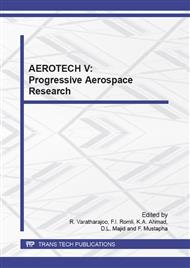p.399
p.407
p.414
p.420
p.426
p.431
p.437
p.444
p.450
Study of Wake Profiles of a Simplified Model of High Speed Train Using RANS and LES Turbulent Models
Abstract:
Flow structure over bluff bodies is more complex in wake. The wake is characterized by the unsteady behavior of the flow, large scale turbulent structure and strong recirculation region. For the case of high speed train, wake can be observed at the gap between the coaches and also on the rear coach. Wakes formation of high speed train are generated by free shear layer that is originated from the flow separation due to the sudden change in geometry. RANS and LES turbulent models are used in this paper to stimulate the formation of wakes and behavior of the flow over a simplified high speed train model. This model consists of two coaches with the gap between them is 0.5D. A total of four simulations have been made to study the effect of computational domain size and grid resolution on wake profiles of a simplified high speed train. The result shows that the computational domain can be reduced by decreasing the ground distance to 1.5D without affecting the magnitude of the wake profile. Both RANS and LES can capture the formation of the wake, but LES requires further grid refinement as the results between the two grid resolutions are grid dependent.
Info:
Periodical:
Pages:
426-430
Citation:
Online since:
October 2014
Price:
Сopyright:
© 2014 Trans Tech Publications Ltd. All Rights Reserved
Share:
Citation:


